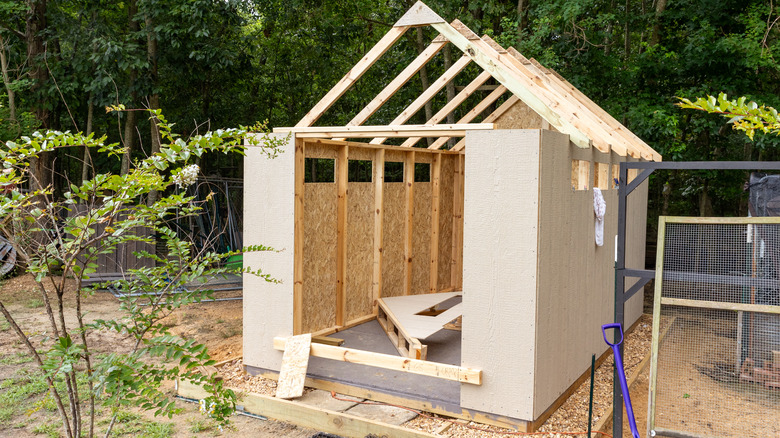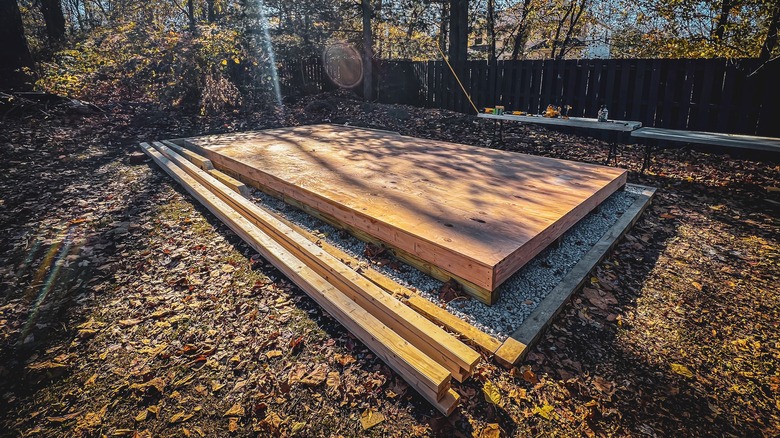How To Choose The Most Durable Wood For Your Outdoor Shed
Sheds help out a lot in a home. They serve as places to work on DIY projects and to store tools and equipment. They can also be used as extensions of the home when there isn't enough space indoors, like for a simple home gym or extra living space. Whatever you're using yours for, a shed needs the right materials so you get the most out of it. If you're using wood, you need the most durable type, and this decision should be based on which is the most weather-resistant. Choose solid wood that is pressure-treated, or go with an exterior-grade plywood for wall sheathing.
Sheds can be set up in many different ways, but a major need with all of them is that they must be built to withstand harsh temperatures, wind, and precipitation so that both the interior and the exterior remain intact. One pro of a wood shed is that it can do well in virtually any kind of environment, but the corresponding con is that a wood shed needs to be cared for properly for you to enjoy it in all seasons. Even very durable wood should be treated and inspected for damage regularly.
Choose weather-resistant wood and don't be afraid to mix types
As you consider wood for its style and customization options, remember that it isn't the most durable material for your backyard storage shed so you need the right type to assure it stands firm under the elements. Note that weather damage can take many forms when it comes to wood. To illustrate, heavy rains and winds can instantly bring down a weak structure during a storm, but a structure can also break down gradually due to the water it has soaked up over time. Because of this, you need materials that can handle these various issues. One way to approach this is to mix materials.
For instance, you can use exterior-grade plywood for the body of the structure since it's a weather-resistant wood, then oak, cedar, or pressure-treated lumber for the floor where it meets the ground. When you've made a solid structure from top to bottom, you can then protect it with a roof. One tip is to build the roof so it extends past where the structure starts by one foot all around, per the EPA. This way, precipitation will just roll off to the ground. Ready to start on your outdoor shed? Try this easy storage shed DIY.

